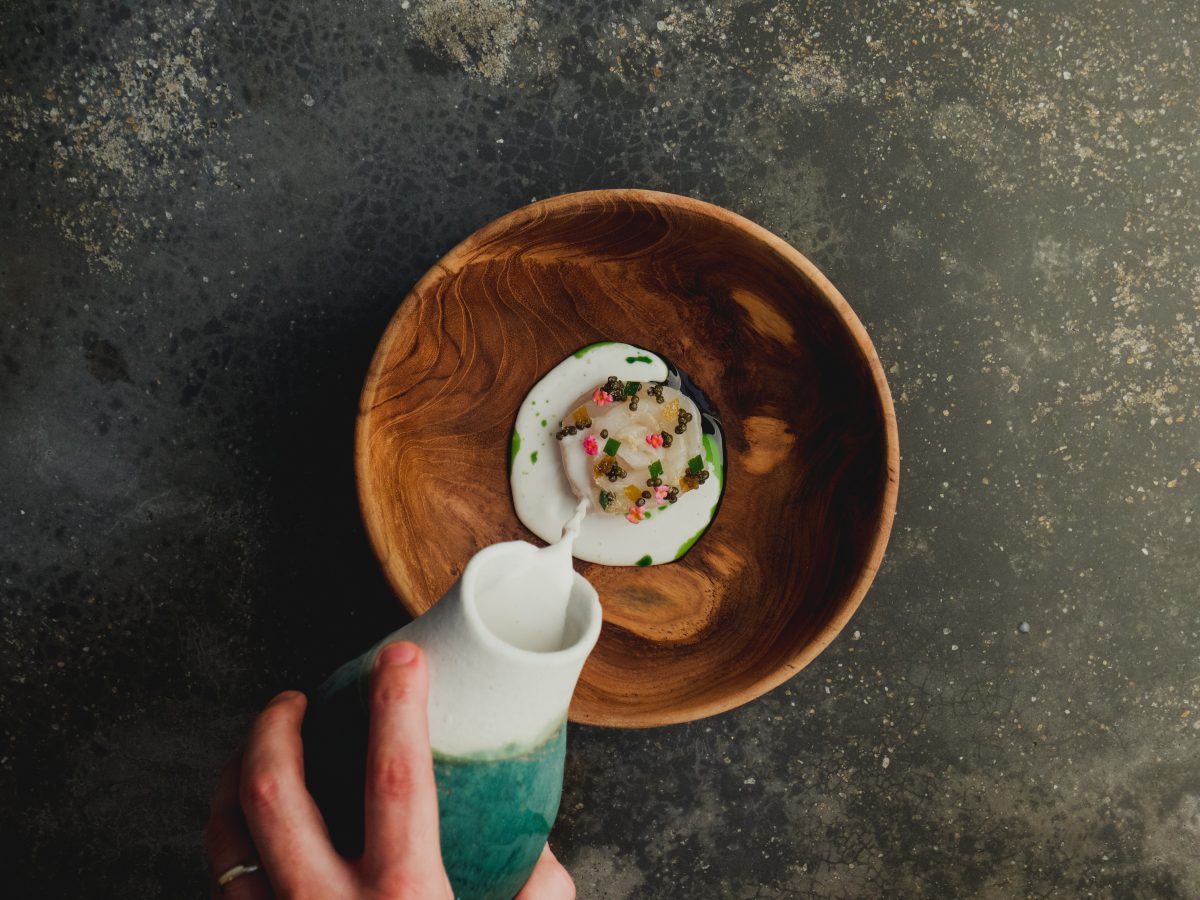Our research and development methodology at Nouri is structured, but we always leave room for improvisation. We follow research guidelines but are willing to break them if the work demands it. Our primary mandate is always creative.
We begin with a specific kind of pattern recognition. Drawing on the vocational strength of our chefs, we identify similarities in ingredient, technique, or flavour of dishes from around the world. How does a mole from Mexico resemble a red curry from Thailand? Why do Peruvians cure their fish in the same way as Pacific Islanders? We are able to ask these questions because our chefs taste these questions. Taste— which can be dismissed as a subjective experience in amateurs— is a rigorous tool at the disposal of our professional chefs. It frames and guides our research questions.
We then conduct preliminary historical research to determine whether the patterns we identify are the result of mutually independent development or cultural exchange. When an ingredient is found around the world, we often see similar methods of use. Liquorice is an example. More often, we recognise similarities because of cultural exchange. Food travels across boundaries and between cultures through trade, war, migration, etc. As a result, each culture adopts the ingredient or technique, featuring certain elements of the culture from which it received it, and imbuing the item with new features, too. Chili pepper is an excellent case study of an ingredient that has transformed the cuisines of South America, Europe, Southeast Asia, and South Asia.
Our chefs begin their development process with these initial observations.
Then, we approach relevant experts— sometimes regional historians, other times anthropologists, sociologists, linguists, economists, etc.— to validate, and sometimes challenge, our hypotheses. They provide access to primary source materials that help us map the lineage of a specific food item as it travels across cultures. This step is essential to our crossroads approach to food; it allows us to work with products or techniques that are verifiably shared by people globally.
We also partner with chemists and food scientists to examine the molecular structures of the foods we think share common origins or features. On our menu, we serve a rice stem dish that draws on the shared flavour profiles of a south Indian buttermilk and a Norman sauce dieppoise; this link is confirmed scientifically and culturally.
Our final output is an original dish that is conceptually related to food traditions from around the world without being traditional. It is innovative without ignoring historical influences. It fulfils the requirements of a complete dish in terms of taste, texture, and style, but also paves the way for a broader engagement with global culture.
Beyond food
Crossroads thinking was born out of a desire to think more deeply and critically about culture and globalisation. A focus on food was incidental— we just happened to be chefs and/or working in the culinary industry. Crossroads was an epistemological position before it was a cooking philosophy.
Today, we collaborate with architects, fashion designers, and visual artists to expand their practices with a detailed study of cross-cultural interaction and influence.

